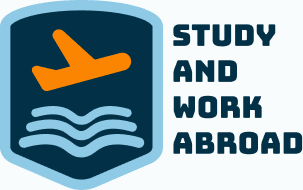Call Us:+91-9920234749, +91-9833420909 info@studyandworkabroad.in
SDS vs. Non-SDS Canada Visa Applications: A Comprehensive Guide and Analysis
Many international students choose to study in Canada because they want to get a good education, learn about other countries, and find interesting jobs. You can apply for your visa under 2 options, the Student Direct Stream (SDS) and the Non-SDS option. As a student from India who is interested in attending school in Canada, working through the process of applying for a visa may be thrilling. The student direct stream and the non-student direct stream route are the two basic methods that the government of Canada uses to make it possible for Indian students to receive a study permit.
Candidates need to know the differences between these two options so they can make smart decisions and successfully apply for a visa. There are some differences between applying for an SDS and a Non-SDS Canada visa. This guide and analysis will look at those differences, such as who can apply, how long it takes, what papers are needed, and more.
What is the Student Direct Stream (SDS)
Immigration, Refugees, and Citizenship Canada (IRCC) says that the Student Direct Stream (SDS) is designed to help students from certain countries, including India get visas faster. It reduces handling times and makes the process run more easily.
There are 3 mandatory requirements to apply for a visa under SDS:
- A minimum band score of 6.0 in IELTS is required or 80 in TOEFL or 60 in PTE.
- GIC deposit of CAD 20635
- Tuition fee paid for 1 full year of the course.
Advantages of SDS
People who apply through the Student Direct Stream and meet certain standards can get a lot of benefits, such as
- Faster processing times: SDS applications are often processed more quickly than non-SDS applications. This means that students can get visas more quickly.
- Less paperwork needed: People registering for SDS only need to send in a few papers, which speeds up the process and makes it easier to keep up with.
- Dedicated processing stream: SDS applications are dealt with in a separate stream, which could make processing more stable and faster than for non-SDS applications.
What is the Non-SDS
For international students who can’t get into the Student Direct Stream, the Non-SDS method is the normal way to find a visa. Students from countries that aren’t on the list of countries that can get SDS can still use the Non-SDS way, even though it may take longer to process and need more paperwork.
Advantages of Non-SDS
The Non-SDS way may take longer to process and need more paperwork, but it has these advantages:
- Easier accessible paths: People from countries that aren’t on the list of countries that can use the SDS can use the non-SDS method. It allows people from more places around the world to apply.
- No strict regulations: Students don’t have to follow the SDS’s strict rules on English requirement and GIC.
- Multiple checks possible: If an application made using non-SDS methods is denied, the applicants can appeal or provide more proof to support their case. Key Differences Between SDS and Non-SDS
Let’s delve deeper into the differences between SDS and Non-SDS visa applications:
| Aspect | SDS | Non-SDS |
| Visa Processing Time | 20 Calendar days | 6-8 Weeks (approx.) |
| Eligibility | Applicable to specific countries | Applicable to all countries |
| Documentation | Brief and streamlined | Extensive and confusing |
| Application Mode | Online (only accepted online) | Can be submitted offline |
| Success Rate | 71% | 40% |
Why Should You Opt for SDS Instead of Non-SDS?
The following are some of the reasons why students from India should think about SDS:
- Quicker Processing: The SDS greatly cuts down on the amount of time you have to wait, which enables you to organize your trip to participate in study abroad more effectively.
- Predictable Outcome: SDS offers assurance in the process of acquiring a study permit due to its highly successful approval rate . The application process can be completed online, which facilitates the submission and tracking of the application.
Final Thoughts
There are a lot of applicants for the Non-SDS route. These applicants come from all over the world, which helps make Canadian schools and colleges more diverse. Canadian schools are better for everyone because students from countries that aren’t on the SDS bring new ideas and experiences to the classroom and the social scene.
Students from a wider range of countries can still choose the Non-SDS route, which gives them more freedom. On the other hand, qualified applicants from certain countries like India can choose the SDS route, which has quicker processing times and easier paperwork.
If students know the pros and cons of each of these options, they can make choices that will help them reach their educational goals and dreams. If you still have doubts, you can consult with our experts at Study And Work Abroad. We can help you apply for both types of visas in Canada. Give us a call, and we will connect with you soon.

